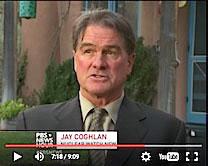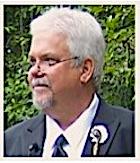For Immediate Release
Santa Fe, NM. Today the National Nuclear Security Administration (NNSA) announced an Environmental Assessment (EA) to increase the amount of plutonium used in the Radiological Laboratory Utility and Office Building (AKA the “Rad Lab”) at the Los Alamos National Laboratory (LANL) from 38.6 grams of plutonium-239 equivalent to 400 grams. [See NNSA notice below.] This 10-fold increase is significant because it will dramatically expand materials characterization[1] and analytical chemistry[2] capabilities in the Rad Lab in support of expanded plutonium pit production for future nuclear weapons designs. It also re-categorizes the Rad Lab from a “radiological facility” to a “Hazard Category-3” nuclear facility.
There is currently no plutonium pit production scheduled for the existing nuclear weapons stockpile. Instead, independent scientists have concluded that pits last a century or more (without a proscribed end date), and the U.S. already has some 15,000 pits stored at the Pantex Plant near Amarillo, TX. Despite that, LANL is now tooling up to produce new pits for a proposed Interoperable Warhead that is supposed to replace existing warheads on the Air Force’s Minuteman III intercontinental ballistic missiles and the Navy’s sub-launched Trident missiles. However, the future of the Interoperable Warhead is still very much in doubt because the Navy doesn’t want it.[3]
In December 2015 the Defense Nuclear Facilities Safety Board (DNFSB) reported that then-DOE Secretary Moniz approved re-categorizing the Rad Lab “with a material-at-risk limit of 400 g plutonium- 239 equivalent.” [4] Starting in 2016, NNSA has already spent $2 million in the process to re-categorize the Rad Lab. However, the National Environmental Policy Act (NEPA) requires that federal officials conduct public review and comment before reaching a decision to commit “irretrievable resources” (such as taxpayer funding) to a proposed project. Hence conducting an environmental assessment (EA) after the fact arguably violates the law.
Moreover, NEPA also prohibits the “segmentation” of issues and requires that all “connected” actions be included in the same public review. This environmental assessment (EA) to raise the plutonium limit in the Rad Lab should not be a standalone document, but instead be part of a far broader programmatic environmental impact statement on expanded plutonium pit production.
NNSA will no doubt argue that this narrow environmental assessment to raise the amount of plutonium at the Rad Lab is legal because it merely seeks to replace the capabilities of the old and dangerous Chemistry and Metallurgy Research Building. However, this all goes back to the Department of Energy’s 1996 Stockpile Stewardship and Management Programmatic Environmental Statement, which resulted in a formal Record of Decision to relocate plutonium pit production at the Los Alamos Lab.[5] However, that decision specifically limited pit production at LANL to 20 pits per year because of the dangerous, deteriorating conditions at the old CMR Building, which the Rad Lab was to partially replace.
The larger Chemistry and Metallurgy Research Replacement (CMRR) Project “Nuclear Facility” was canceled in 2012 when project costs exploded from an originally estimated $600 million to as high as $6.5 billion. Following that NNSA decided without any NEPA review to pursue a 3-fold strategy to maintain plutonium operations at LANL by 1) raising the plutonium limit in the Rad Lab; 2) upgrading LANL’s main plutonium facility PF-4; and 3) building two or three underground “modular” facilities at $1 billion each.[6]
However, over the last decade plutonium operations at LANL have had a very troubled history. In February 2014 a radioactive plutonium waste drum improperly prepared by the Lab ruptured underground at the Waste Isolation Pilot Plant, contaminating 21 workers and closing that facility for nearly three years, at a cost of at least $1.5 billion to the taxpayer to reopen. Also during that time many major plutonium operations at PF-4 were suspended for three years because of serious nuclear criticality safety concerns.[7] As a result, NNSA is now openly considering whether to have expanded plutonium pit production at LANL or the Savannah River Site near Aiken, SC, or both, while the construction of underground modules at LANL seems increasingly unlikely.
Today’s draft environmental assessment claims that nothing has changed in the Rad Lab’s purpose and need since 2003, when an environmental impact statement was completed for the entire Chemistry and Metallurgy Research Replacement Project.[8] That statement is preposterous on its face because of the cancellation of the CMRR-Nuclear Facility alone. The draft environmental assessment itself states that the plutonium increase in the Rad Lab is expected to be “Sufficient for the combined RLUOB and PF-4 capabilities to satisfy anticipated programmatic needs for AC [analytical chemistry] and MC [materials characterization][9] (Emphasis added.). “Anticipated programmatic needs for AC and MC” are easily foreseeable as Congress has statutorily required the expansion of plutonium pit production to demonstrate the capability of producing up to 80 pits per year by 2027. More recently, the Trump Administration’s Nuclear Posture Review requires NNSA to “Provide the enduring capability and capacity to produce plutonium pits at a rate of no fewer than 80 pits per year by 2030.” (Emphasis added.) But the 1996 ceiling of 20 pits per year has never been officially raised following NEPA review, despite numerous NNSA attempts to do so.[10]
Jay Coghlan, Nuclear Watch Director, commented, “NNSA needs to get its NEPA house in order. Instead of this lessor environmental assessment to increase the amount of plutonium in the Rad Lab, there should instead be programmatic review of all aspects of expanded plutonium pit production, including the inevitable cost overruns, nuclear safety problems, and contamination. Most of all, the need for expanded plutonium pit production should be publicly and firmly established, instead of vaguely being for speculative future new nuclear weapons designs that aren’t needed and may actually degrade national security because they can’t be full-scale tested.”
# # # Draft Environmental Assessment Available for Public Comment
The National Nuclear Security Administration released a draft environmental assessment for public comment today that proposes operational changes to the Radiological Laboratory Utility Office Building (RLUOB) at Los Alamos National Laboratory.
NNSA prepared the Draft Environmental Assessment of Proposed Changes for Analytical Chemistry and Materials Characterization at the Radiological Laboratory/Utility/Office Building, Los Alamos National Laboratory, Los Alamos, New Mexico (Draft EA) (DOE/EA-2052), in accordance with the National Environmental Policy Act (NEPA).
This Draft EA evaluates the potential environmental impacts of recategorizing RLUOB from a Radiological Facility to a Hazard Category 3 Nuclear (HC-3) Facility with an increased material-at-risk limit of 400 grams of plutonium-equivalent material (PuE), which is 15 percent of PuE allowed in an HC-3 Facility.
Increasing the allowable radioactive material inventory from the current 38.6 grams of PuE to 400 grams would enhance the use of laboratory space in Technical Area55.
The proposed approach would allow some analytical chemistry and materials characterization capabilities previously planned for LANL’s Plutonium Facility-4 Building to be installed in RLUOB. The purpose of the EA will provide sufficient evidence and analysis to determine whether to prepare an Environmental Impact Statement or to issue a Finding of No Significant Impact.
The public is invited to comment on the Draft EA during the 30-day review period ending on March 26, 2018. The Draft EA is available on the Department of Energy’s NEPA website. A copy of the Draft EA is also available for review at the Los Alamos National Laboratory Reading Room, 94 Cities of Gold Road, Pojoaque, NM 87506.
Comments may be submitted via e-mail at RLUOBEA@hq.doe.gov or U.S. mail at: U.S. Mail: NNSA Los Alamos Field Office, ATTN: CMRR Project Management Office, 3747 West Jemez Road, Los Alamos, NM 87544
[9] Ibid., page 10. [10] NNSA tried but failed to raise the pit production cap in the 2003 Modern Pit Facility environmental impact statement, the 2008 LANL Site-Wide Environmental Impact Statement, and the 2010 Complex Transformation Programmatic Environmental Impact Statement.
– Jay Coghlan Executive Director, Nuclear Watch New Mexico
jay@nukewatch.org
www.nukewatch.org
________________________________

Please join us in this effort and help us press on at this critical juncture by making a tax-deductible contribution of whatever amount you can afford.You can make a donation online at Nukewatch.org, or you can send a check to Nuclear Watch of New Mexico, 903 W. Alameda #325, Santa Fe NM 87501
Thanks!
Still hungry for facts? All you can eat at www.nukewatch.org! Our website keeps expanding and adding new sections; Have you visited lately:



(l.) NukeWatch Exec. Director Jay Coghlan, on PBS News Hour, Oct 11, 2012.
(ctr.) Scott Kovac, Operations Director.
(rt.) Stephen Miller, Website Editor









